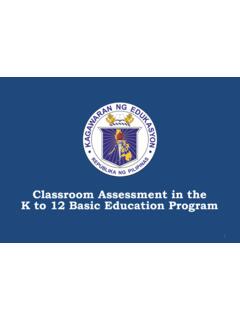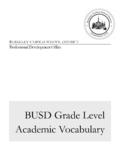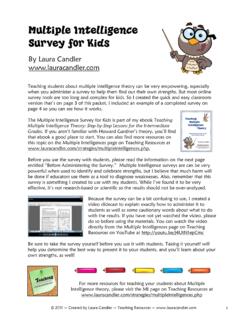Transcription of Effective Authentic Assessment Strategies in Early ...
1 Effective Authentic Assessment Strategies in Early Childhood and Elementary Classrooms Lori Caudle, , Associate Professor Birth-Kindergarten Program WCU Symposium for the Support of Beginning Teachers August 4, 2016. WHAT COMES TO MIND WHEN YOU HEAR. THE WORD Assessment ? Authentic Assessment . Situated in real-life experiences or scenarios Based on multiple forms of measurement, including observation and documentation Considers the life experiences, culture, personality, and dispositions of children Occurs over time in multiple contexts Informs practice Must include teacher reflection to be Effective (Ratcliff, 2001/2002).
2 May feel overwhelming to teachers unless naturally integrated into daily life of classroom Children are still learning during Assessment times Standardized test data should inform Authentic Assessment data and visa versa Assessment CONTINUUM. Traditional ---------------------------------------- -------------- Authentic Selecting a Response ---------------------------------------- ---- Performing a Task Contrived ---------------------------------------- ----------------------- Real-life Recall/Recognition ------------------------------- Construction/Application Teacher-structured ------------------------------------- Student-structured Indirect Evidence ---------------------------------------- ---- Direct Evidence GOALS OF Authentic Assessment .
3 Enhance the development of real-world skills Encourage higher-order cognitive skills (analysis, synthesis, evaluation). Promote active construction of creative, novel ideas and responses Promote the integration of a variety of related skills into a holistic project Enhance students' ability to self-assess their own work and performance . *Planning for Assessment video clip Authentic Assessment CYCLE. Instruction Observation Planning Documentation Review &. Interpretation OBSERVATIONS. l Plan time to observe. l Consider what you want to find out about the child or children.
4 L Observations may be short and frequent throughout a day or focused on a particular activity. l Decide whether to observe without direct engagement or to engage the child to test a hypothesis. l Plan what to look for and how to document what you observe. l Be ready: Have handy a pencil and small sticky notes, a notepad, or other means of recording. Write observations down right away. l Pick times when: Other teachers are around. Activities do not require your full attention. l Ask for help other teachers can also observe and document.. Assessment /Ongoing%20 #presentations Assessment QUESTIONS.
5 What should we Why should we document? document? Complete story Accountability One topic, in-depth Extend learning Individual & Make learning visible collective growth and development The Power of Documentation in the Early Childhood classroom (Seitz, 2008). TOOLS FOR TEACHERS. PLANNING FOR Assessment . EXAMPLE: DAILY Assessment AREAS CHART. Here is an example of a partially completed Assessment chart that is used to remind staff which areas of learning will be the focus of Assessment each day. There is a blank copy of the Daily Assessment Areas Chart on the next page for use in your own classroom .
6 Week of: Monday Tuesday Wednesday Thursday Friday 9/12. Using language Playing with Phonological What to assess: Balancing skills to express Classification peers awareness needs Week of: Monday Tuesday Wednesday Thursday Friday 9/19. Number Use of writing Emergent Knowledge of Exploration of tools What to assess: concepts and writing self visual arts operations Week of: Monday Tuesday Wednesday Thursday Friday 9/26. What to assess: Week of: Monday Tuesday Wednesday Thursday Friday 10/3. What to assess: NCQTL For more information, contact us at: or 877-731-0764. This document was prepared under Grant #90HC0002 for the Department of Health and Human Services, Administration for Children and Families, Office of Head Start, by the National Center on Quality Teaching and Learning.
7 SPRING 2014. Authentic Assessment . TOOLS FOR DOCUMENTATION. Anecdotal notes/ event samples Narratives & running records Jottings Checklists/rubrics Time samples Language samples Parent information (interviews, surveys). Functional behavior Assessment (FBA). Photographs Videos Work samples Portfolios Documentation Panels What else? ANECDOTAL NOTE/EVENT SAMPLE. ~inclusion/ TOOLS FOR TEACHERS. USING CHECKLISTS. EXAMPLE: SKILL Assessment CHECKLIST. This checklist example documents multiple children's progress in retelling a story, on three data collection points, over a four-week period.
8 There is a blank copy of the Skill Assessment Checklist on the next page for use in your classroom . Child's name: Amina domain : Expressive Language Skills or steps Date Retells two events Retells three or more Comments Retells one event in logical order events in logical order 2/19/14. 3/5/14. 3/19/14 Retold three events from favorite story book Child's name: Dylan Skills or steps Date Retells two events Retells three or more Comments Retells one event in logical order events in logical order 2/19/14. 3/5/14. 3/19/14 Retold two events, but not in correct order Child's name: Skills or steps Date Retells two events Retells three or more Comments Retells one event in logical order events in logical order NCQTL For more information, contact us at: or 877-731-0764.
9 This document was prepared under Grant #90HC0002 for the Department of Health and Human Services, Administration for Children and Families, Office of Head Start, by the National Center on Quality Teaching and Learning. SPRING 2014. SCAFFOLDED EXPECTATIONS. Goal: Sort by Classify Create Create Create Extend Model one by one simple simple simple patterns simple attribute attribute pattern patterns patterns patterns with with with and sort words objects actions objects Novice Does not Not Yet Not Yet Not yet Not yet Not yet Not yet (1) meet Competent status in one or more area Competent Meets One One Creates AB Creates AB Creates AB Extends AB (2) Competent attribute attribute pattern pattern pattern pattern status in all areas Pro cient Meets More than More than Creates Creates Creates Extends (3)
10 Pro cient one one advanced advanced advanced advanced Status in 4 or attribute attribute pattern pattern pattern pattern more objective (eg. ABC, (eg. ABC, (eg. ABC, (eg. ABC, areas ABBA, etc.) ABBA, etc.) ABBA, etc.) ABBA, etc.) Student Name_____ Teacher _____. Date_____. domain Reading Strategies Word & Sentence Variety of Level of Score Recognition Texts Independence 4 Reads short stories and Recognizes range of Reads a variety of mate- Reads silently for short peri- Expanding books. Uses reading strate- sight words and names. rials, including fiction, ods of time. gies.

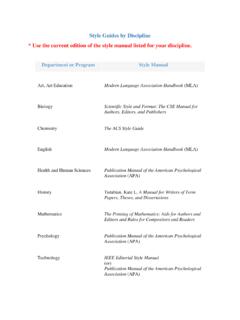

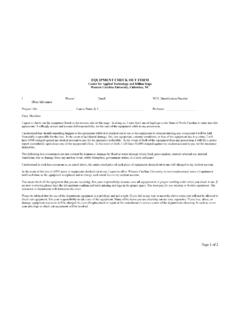







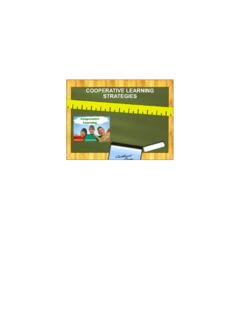
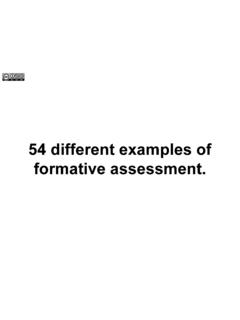
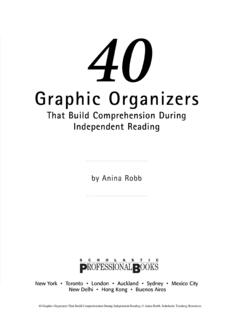
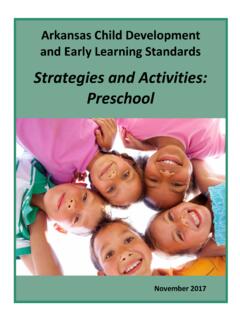
![[PDF] Differentiated Instruction PPT](/cache/preview/a/c/8/4/8/c/0/6/thumb-ac848c0658649db8874b31455869b542.jpg)
